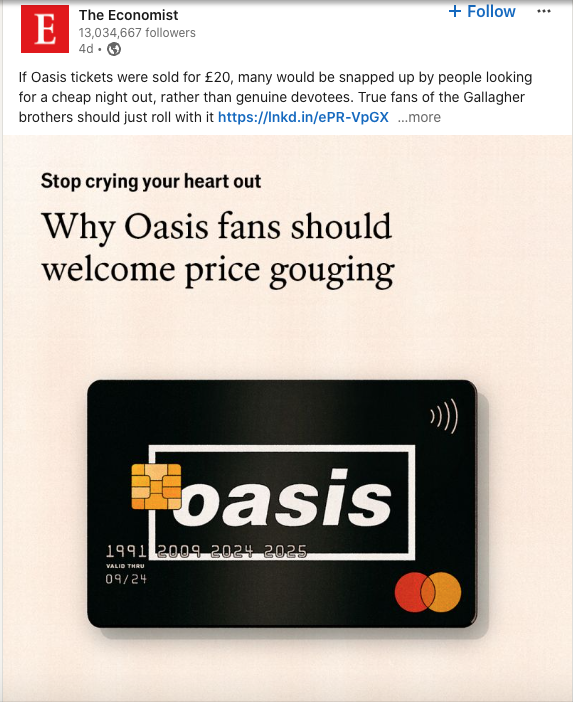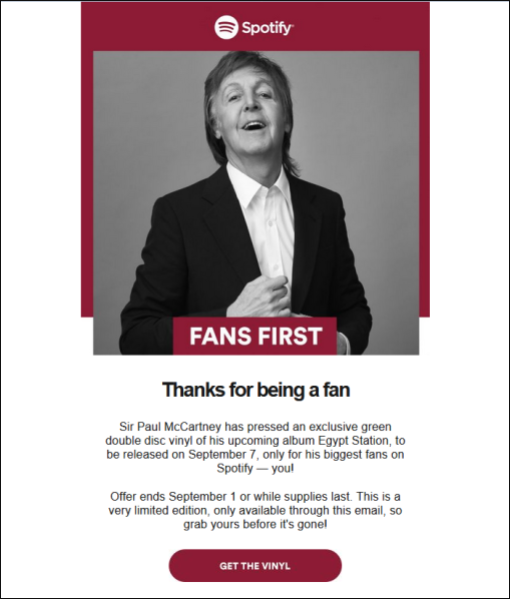
What Is Copywriting?
If you’ve ever wondered, “What is copywriting?” you’re not alone. There are many types of freelance writing. As an aspiring freelance writer, getting to grips with the differences between them can seem daunting.
In this post, we’ll guide you through the basics of copywriting. We’ll explain how it differs from content writing and outline its importance for businesses of all shapes and sizes. We’ll also explore examples of various kinds of copywriting to give you a clearer understanding of this valuable skill.
What Is Copywriting?
Copywriting is a type of writing that promotes a product, service, or idea. It’s all about persuading your reader to take action straight away – whether that’s by making a purchase, signing up for a newsletter, or simply clicking on a link.
It follows that copy (the term commonly used for a piece of copywriting) comes in various forms, which we’ll take a closer look at later. These include:
- Advertisements
- Product descriptions
- Landing pages
- Social media posts
- Email campaigns
Copywriting vs. Content Writing
It’s easy to confuse copywriting with content writing because both involve writing for businesses. However, they two serve distinct purposes:
- Content writing is about educating, entertaining, or informing the reader. Think of blog posts, articles, and ebooks that provide value to you as a reader, even if you don’t buy from or subscribe to the website. (You’re reading an example of content writing right now!)
- Copywriting is focused on immediate results, such as making sales or generating leads. It’s short, punchy, and action oriented. To this end, copywriting often uses the AIDA model, which stands for attention, interest, desire, and action. It also draws on concepts like fear of missing out, better known as FOMO.
For a more detailed exploration of the differences between the two, check out our blog post, What’s the Difference Between Copywriting and Content Writing?
Why Is Copywriting Important?
As you’ll have seen from the comparison above, copywriting is designed to have an immediate influence on the reader, and that is what makes it important to businesses of all kinds.
Here are some of the many benefits of effective copywriting:
- Increases conversions: Well-written copy can turn potential customers into paying clients by clearly communicating the value of a product or service.
- Builds brand identity: Consistent, persuasive copy helps shape how a potential customer perceives a brand, making it more memorable and trustworthy.
- Improves user experience: Copywriting isn’t just about sales. Clear, concise messaging can guide visitors smoothly through websites or apps.
- Enhances SEO: Copy written with an eye for relevant keywords will increase the online visibility of a brand by ranking it higher on a list of organic search results.
- Supports campaign objectives: Effective copy can help achieve specific marketing goals, whether it’s a product launch, a seasonal promotion, or a rebranding effort.
Without strong copy, even the most innovative product or service might struggle to find its audience. Copywriting ensures that your message is not only heard but acted upon.
5 Examples of Copywriting
As we saw earlier, copywriting takes different forms, and each is tailored to a specific marketing strategy.
Let’s take a closer look at five examples that show how versatile copywriting can be. For a more detailed breakdown, check out our post, A Comprehensive Guide to 5 Types of Copywriting.
1. Product Descriptions
Product descriptions are a type of copywriting used by businesses to highlight the features and benefits of a product.
These descriptions must be concise yet persuasive enough to convince customers to make a purchase. They often use sensory language, power words, and a strong call to action (CTA).
Take a look at this example from Fabulous Welshcakes, which conjures up a tempting image in its 32-word product description.

2. Landing Pages
A landing page is a web page designed for a specific marketing or advertising campaign. It’s the page you’ll see after clicking through from a search result, ad, or email.
Companies use landing pages for product launches, special promotions, or to generate new leads. The purpose is to encourage visitors to the site to take a single action – sign up for a free trial, enroll for an event, or subscribe to a newsletter – so the copy will concentrate on the benefits of taking that action and simplify the process.
An example of this can be found on this landing page for Mailchimp where the copy for their landing page builder emphasizes simplicity, benefits, and easy sign-up.

3. Social Media Ads
Whether it’s a Facebook ad promoting a sale or a post on Threads driving traffic to a blog, this type of copy needs to stop you mid-scroll.
Therefore, ads on social media require punchy copy that grabs the reader’s attention and encourages quick engagement.
This LinkedIn post from The Economist makes great use of popular culture references and a hot topic.

4. Email Campaigns
Copywriting for an email campaign aims to address the particular needs of the recipient to prompt them to take action.
Email copy addresses the recipient directly and will often hint at something exclusive for them if they take a particular action within a limited time.
You may have received a “Fans First” email from Spotify that’s like the one below. It’s written to feel personal and exclusive and uses phrases like “very limited edition” and “grab yours before it’s gone” to direct you to click that big “Get the Vinyl” button.

5. Search Engine Ads (aka Pay-Per-Click)
Pay-per-click (PPC) ads, like Google Ads, encourage clicks by relying on copy that matches a user’s search intent.
These ads appear at the top of search engine results and have a very limited space to grab your attention and convey their message. As such, this type of copywriting is characterized by condensed phrases that match keywords paired with a short and to-the-point CTA.
The copy for the following PPC ad for Animal Friends highlights its niche, social conscience, trustworthiness, and affordability, all within 135 characters.

Becoming A Copywriter
Copywriting is a skill that plays a valuable role in marketing. From persuasive product descriptions to engaging email campaigns, effective copywriting can significantly impact a business’s success.
So, as a freelance writer, understanding what copywriting is and how it differs from content writing can open new opportunities for you. The key message? Copywriting isn’t just about writing; it’s about persuading your audience to act.
Fancy taking some action yourself? You can develop the necessary skills for your own career in website copywriting with our Becoming A Copywriter course. If you’re unsure whether it’s for you, why not try two lessons for free?





Your email address will not be published.